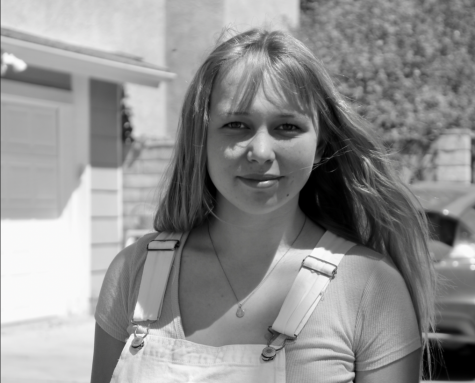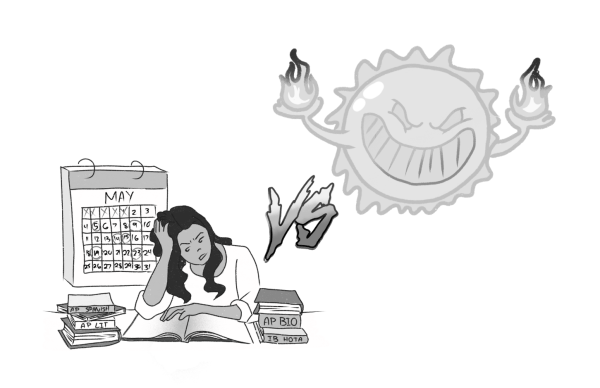‘Right Before I Go’: CHS Theatre Perfoms Impactful Play on Suicide Prevention
The theatre lies silent as Stan Zimmerman, conceiver and adaptor of CHS Theatre’s most recent production, “Right Before I Go,” steps out onto a minimalistic stage scattered with chairs. Zimmerman takes a seat on the chair in the middle. He proceeds to introduce himself as a producer working in the entertainment industry who has been touched deeply by suicide. Kevin, he tells the audience, was a dear friend of his that never hesitated to attend his productions. When he discovered his longtime friend had committed suicide, he was devastated, not to mention the feeling when he was told that Kevin had mentioned him in his suicide note. Zimmerman began to research suicide rates and statistics in an effort to make sense of his friend’s death. His findings were a wake-up call: on average, one person commits suicide every 16.2 minutes. He felt it was his duty to do something in an effort to spread awareness. As a result, he conceived the production “Right Before I Go” as a tribute to his friend, Kevin. Though Zimmerman lives in New York, for the most part, he made the decision to fly into California to participate in the show when he heard about the CHS production. Rather than a cast of just four as “Right Before I Go,” had been executed by Zimmerman in the past, he was excited to see his production with 30 cast members.
Gradually, the cast, compiled of both CHS theatre students and CUSD faculty, begins to enter onto the stage, joining Zimmerman. Before sitting down, they read off various suicide notes from real people-some famous, others not. The suicide notes of people including Kurt Cobain, David Foster Wallace, Ralph Barton, and Virginia Woolf are read to the audience. Others, including a war veteran’s, an eighth-grade bullying victim’s, and high schooler Amanda Todd’s are also told. This begins to make up the entirety of the show- the performers, reading off identical binders, tell the stories of each tragically lost life. A face and personality are brought into the note. Emotional tension washes over the audience with each persons unique story. Projected on the back wall of the stage was a picture of each person, description of who they were, and the year they died. All of which was conceived by pro light designer and light board operator Eila Planinc.
“Each person does not play a specific character, it’s more like they are reading the thoughts of the person.” Planinc said. “It’s a staged reading, so they’re just reading off of the script. For the most part we have all of the light on because it’s a staged reading, but in the back, we have this really cool effect. In the back, we have two strips of mesh that light up with LED colors.”
The emotional performance comes to a close as Zimmerman explains to the audience that though his dear friend Kevin is gone, he still comes with him to all of his productions, as he rests his hand over a pocket containing Kevin’s picture. CHS theatre alumni Riley Polanski, eleventh grader Dillon Lopez, tenth grader Nina Brown, and Lydia Brown then step out onto the stage to perform a closing song “You Will Be Found,” as seen in musical “Dear Evan Hansen.”
After the show, the audience was encouraged to stay for a post-show discussion with CUSD mental health professionals, counselors, and board members in an effort to better address possible questions and concerns occurring to audience members. Leading the discussion was one of the cast members, CHS English teacher, and teacher’s union president David Chamberlain.
“The subject matter is very mature and intense,” Chamberlain said. “We do not want the show to end and just send people out the door, a lot of emotions might be happening, so we want to be able to have a conversation. The whole message of the show is to bring suicide into the light, so we can start talking about it, and then through that talk, prevent it.”
Ultimately, the purpose of the production and the post-show discussion was to bring an important conversation to CHS students and staff regarding the suicide epidemic, and more specifically, to reduce the stigma surrounding the topic of conversation. Though, as the play showed, it is a heavy and emotional topic, a crucial aspect in opening up communication about mental health in the first place is opening up a conversation.
Hello there! Our goal is to provide relavent, engaging journalism for readers of all ages. Your donation will support the student journalists of the Wolfpacket at Claremont High School, and will allow us to purchase equipment, print our monthly issues, and enter in journalism competitions. We appreciate your consideration!

Claire Judson has been a Wolfpacket staff member since her sophomore year, and has served as a reporter, Business Manager, Assistant News Editor, and now...







